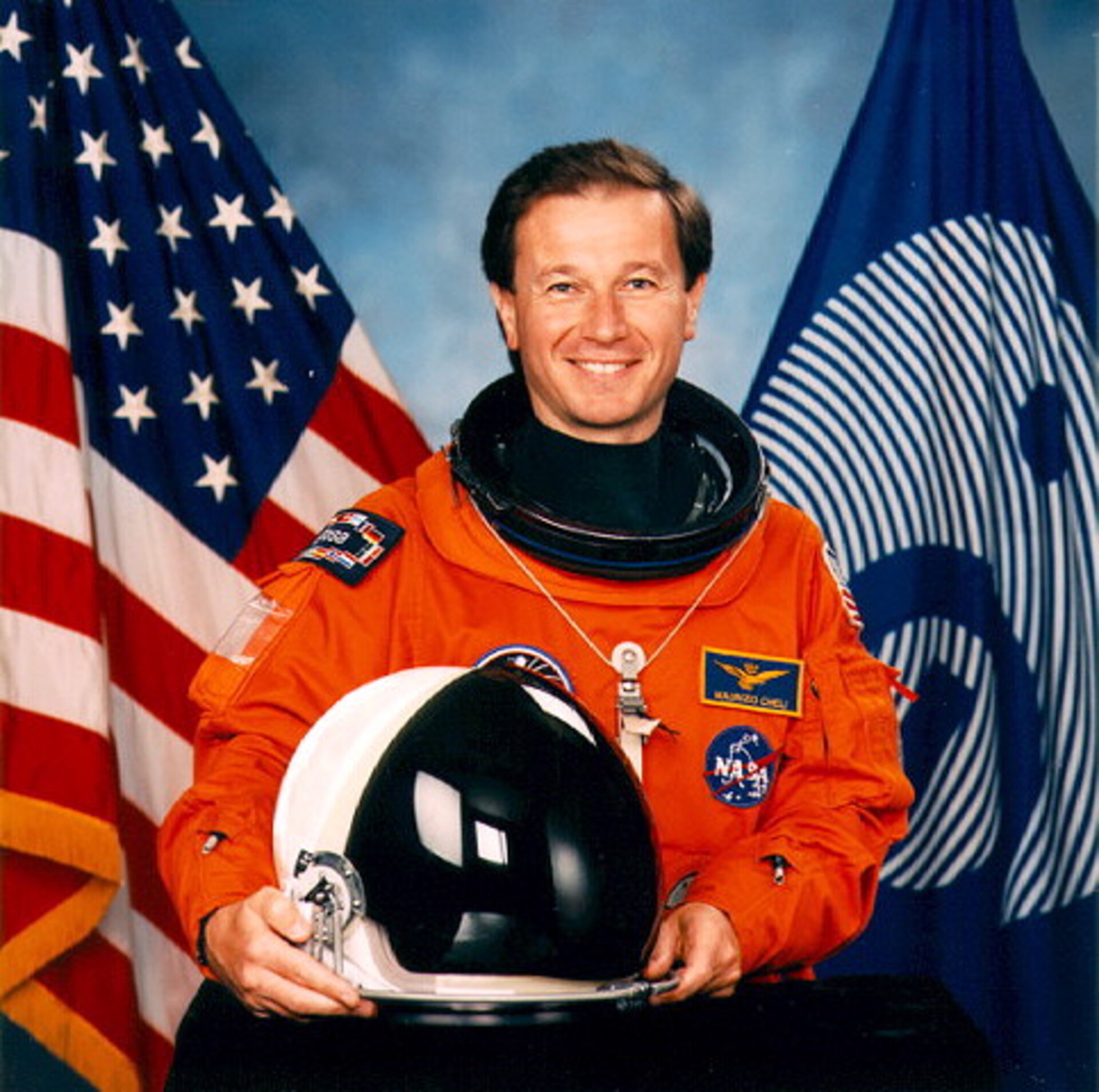Maurizio Cheli
(Lieutenant Colonel, Italian Air Force, Ret.)
Personal data
Born 4 May 1959, in Modena, Italy. Married to the former Marianne Merchez. He enjoys soccer, cycling, tennis and travelling. His mother Eulalia resides in Zocca (Modena), Italy. Her parents, Marcel and Annie Merchez, reside in Brussels, Belgium.
Education
He received a B.S in Aeronautical Sciences from the Italian Air Force Academy in 1982. Graduated from the Italian Air Force War College in 1987 and from the Empire Test Pilot School in 1988. Received a Master of Science in Aerospace Engineering from the University of Houston in 1994, a Master of Science “Magna cum Laude” in Political Science from the University of Torino, Italy in 2004 and a Master in Business Administration (MBA) from ESCP-EAP, Paris, France in 2007.
Special honours
Distinguished graduate, Fighter lead-in training (1983). Top graduate, Italian Air Force War College (1987). Top graduate, Empire Test Pilot's School (1988). Commendatore of the Republic of Italy in 1996.
Awards
Italian Air Force Long Service Medal (1988). McKenna Trophy, Sir Alan Cobham Trophy and Hawker Hunter Trophy, Empire Test Pilot’s School (1988).
Experience
After graduation from the Italian Air Force Academy, Cheli underwent pilot training at Vance Air Force Base, Oklahoma, in 1982-1983. Following fighter lead-in training at Holloman Air Force Base, New Mexico and initial training in the F-104G in Italy, he joined the 28th Squadron, 3rd Recce Wing in 1984. In 1987, he attended the Italian Air Force War College and in 1988 he graduated from the Empire Test Pilot's School, Boscombe Down, United Kingdom.
While assigned to the Italian Air Force Flight Test Center in Pratica di Mare, Rome, he served as a Tornado and B-707 Tanker project pilot on a variety of test programs and as display pilot. His flight experience includes more than 4500 flying hours in over 50 different types of fixed wing aircraft and helicopters.
In June 1992, he was selected by ESA as a member of the second group of European astronauts.
Cheli reported to the Johnson Space Center in August 1992. He completed one year of training in August 1993, and was qualified for assignment as a mission specialist on future Space Shuttle flight crews. His technical assignments included: flight software verification in the Shuttle Avionics Integration Laboratory (SAIL); remote manipulator system/robotics; crew equipment.
He flew on STS-75 in 1996 and has logged over 377 hours in space. Maurizio Cheli left ESA on 31 July 1996.
From August 1996, Cheli became Chief Test Pilot of Alenia Aeronautica in Torino, Italy, and as such worked extensively on the development programme of the Eurofighter Typhoon and on all the other programmes in which the company was involved including the development of UAV’s. He has been display pilot for the Eurofighter Typhoon at the Paris Airshow in 1997, 1999, 2001, 2003 and 2005 and at several other international events.
In December 2007, Cheli became Director of Operational Development at Alenia Aeronautica. While assigned to this job he still flies on all development programmes of the company.
Spaceflight experience
Cheli was a mission specialist on the crew of STS-75. The principle payloads on STS-75 were the re-flight of the Tethered Satellite System (TSS) and the third flight of the United States Microgravity Payload (USMP-3).
The TSS experiment produced a wealth of new information on the electrodynamics of tethers and plasma physics and before it broke at 19.7 km, just short of the 20.7 km goal distance from the Shuttle orbiter, it successfully demonstrated the ability of tethers to produce electricity.
The crew also worked around the clock performing combustion experiments and research related to USMP-3 microgravity investigations used to improve production of medicines, metal alloys, and semiconductors.
STS-75 launched 22 February 1996 and landed back at the Kennedy Space Center on 9 March 1996. The mission was completed in 252 orbits covering nearly 10.5 million kilometres in 377 hours and 40 minutes.


